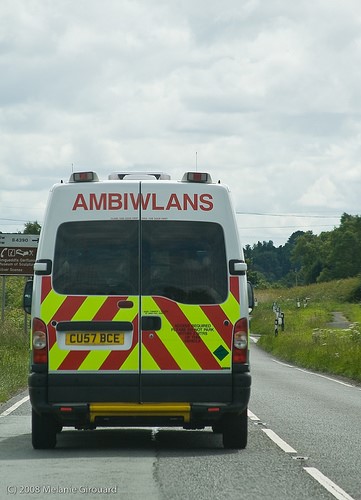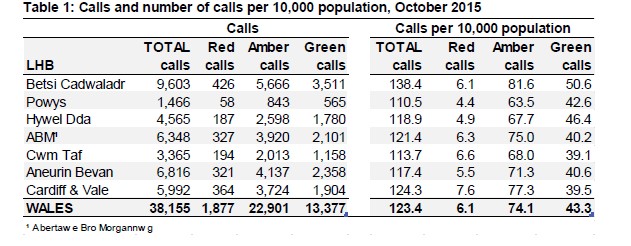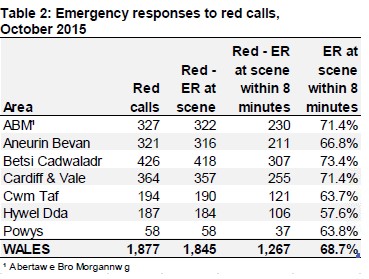Article by Paul Worthington, National Assembly for Wales Research Service
On 25 November Welsh Government published new performance figures for the Welsh Ambulance Services. 
Image from Flickr by Diluvienne. Licensed under Creative Commons.
The figures for October 2015 represent the first month of a year-long pilot – announced by Welsh Government earlier this year- to test changes to the way the performance of emergency ambulance service is monitored. This followed on from recommendations made in 2013 in an independent Strategic Review of Welsh Ambulance Services chaired by Professor Siobhan McClelland. During this trial, only the most serious calls, categorised as Red will have a response time target. All other calls will receive an appropriate response, either face-to-face or telephone assessment, based on clinical need. The new model has three categories of calls – red, amber and green: Red: Immediately life-threatening (someone is in imminent danger of death, such as a cardiac arrest). The target is for 65% of emergency responses to arrive within 8 minutes. Amber: Serious but not immediately life-threatening (patients who will need treatment to be delivered on the scene and may then need to be taken to hospital) Green: Non urgent (can often be managed by other health services) and clinical telephone assessment. There is currently no time target for amber or green calls. During the first month of the trial in October 2015 there were:
- 38,155 emergency calls, an average of 1,231 per day, 1.5% up on the daily average for September 2015
- 1,877 (5%) were red, 22,901 (60%) were amber and 13,377 (35%) were green
- 68.7% of emergency responses to red calls arrived within 8 minutes
- performance ranged from 57.6% in Hywel Dda to 73.4% in Betsi Cadwaladr
- The 65% target was reached in four of the seven health board areas (Abertawe Bro Morgannwg, Aneurin Bevan, Betsi Cadwaladr and Cardiff & Vale), but not in Cwm Taf, Hywel Dda and Powys

 These figures do not include information on response times to Amber and Green calls, which represent around 95% of calls received by the Ambulance Service. More detailed, contextual information on red, amber and green calls will be published quarterly by the Emergency Ambulance Services Committee from the end of January 2016, and the Welsh Ambulance Services NHS Trust is working with Welsh Government to develop performance data which would give a wider view of individual patient experience and outcomes. The National Assembly Health and Social Care Committee will this week be looking at the performance of the Welsh Ambulance Service. This will include scrutiny of progress against the new targets and other key areas for the service such as any delays in the handover of patients to hospitals.
These figures do not include information on response times to Amber and Green calls, which represent around 95% of calls received by the Ambulance Service. More detailed, contextual information on red, amber and green calls will be published quarterly by the Emergency Ambulance Services Committee from the end of January 2016, and the Welsh Ambulance Services NHS Trust is working with Welsh Government to develop performance data which would give a wider view of individual patient experience and outcomes. The National Assembly Health and Social Care Committee will this week be looking at the performance of the Welsh Ambulance Service. This will include scrutiny of progress against the new targets and other key areas for the service such as any delays in the handover of patients to hospitals.




